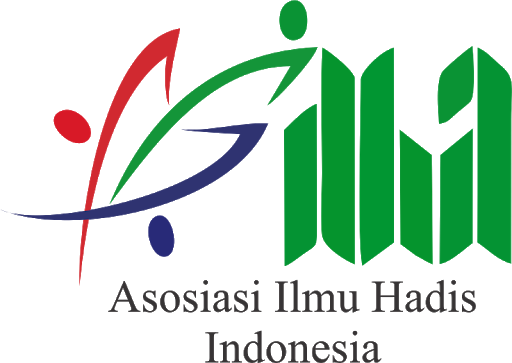Helping a Neighbour in Need: An Auto-ethnography of Lived Hadith Citizenship
DOI:
https://doi.org/10.14421/livinghadis.2021.2703Keywords:
Lived Hadith, Citizenship, Auto-Ethnography, Neighbour, Islamic ScriptureAbstract
This study presents specific ahadīth (sing. hadīth) which inform neighbourly relations on a day-to-day basis. I interpret my actions towards a neighbour, who was experiencing personal problems, as lived-hadīth citizenship. That is, my interactions with my neighbour were infused with Prophet Muhammad's teachings and instructions as found in ahadīth. Aspects of Prophetic wisdom, such as care and easing somebody’s burdens, align with contemporary sociological, anthropological, and psychological definitions of citizenship. This study thus shows that Islamic scripture has a positive role to play in Western societies, shaping daily behaviours such as being a good citizen in one’s neighbourhood.
 Abstract viewed: 421 times
|
Abstract viewed: 421 times
|
 PDF downloaded = 345 times
PDF downloaded = 345 times
References
Abdel Haleem, M. A. S. (2004). The Qur’an. Oxford, UK: Oxford University Press.
Brown, J. A. C. (2018). Hadith: Muhammad’s legacy in the medieval and modern world. London: Allen & Unwin.
al-Bukhari, M. (2015). Manners in Islam (al-Adab al-Mufrad) (R. A. Rahman, Trans.). Beirut, Lebanon: Dar al-Kotob al-Ilmiyah.
al-Bukhari, M. (1997). Sahih al-Bukhari (M. Khan, Trans.). Riyadh: Dar-us-salam Publications.
Chang, H. (2016). Autoethnography. In. Heewon Chang, Auto-ethnography as method (pp. 43-57). New York: Routledge.
Diversi, M., & Moreira, C. (2016). Performing Betweener Autoethnographies Against Persistent Us/Them Essentializing: Leaning on a Freirean Pedagogy of Hope. Qualitative Enquiry 22(7). doi: 10.1177/1077800415617208.
ibn al-Hajjaj, M. (2007). Sahih Muslim (7 Vols.) (N. al-Khattab, Trans.). Riyadh: Dar-us-Salam Publications.
Harris, A., & Roose, J. (2014). DIY Citizenship amongst young Muslims: Experiences of the ‘ordinary.’” Journal of Youth Studies, 17(6), 794-813. doi: 10.1080/13676261.2013.844782.
Kamali, M. H. (2009). Citizenship: an Islamic perspective. Journal of Islamic Law and Culture, (11)2, 121-153.
Lucas, S. C. (2008). Major topics of hadith. Religion Compass 2(2), 226-239. doi: 10.1111/j.1749-8171.2007.00058.x
ibn Majah, M. (2007). Sunan ibn Majah (5 Vols.) (N. al-Khattab, Trans.). Riyadh: Dar- us-Salam Publications.
Nyhagen, L. (2015). Conceptualizing lived religious citizenship: A case-study of Christian and Muslim women in Norway and the United Kingdom. Citizenship Studies, 19(6-7), 768-784. doi: 10.1080/1362.1025.2015.1049979.
Patton, C. (2014). Multicultural citizenship and religiosity: Young Australian Muslims forging a sense of belonging after 9/11. Journal of Intercultural Studies. 35(1), 107-122. doi: 10.1080/07256868.2013.864626.
Peucker, M., & Akbarzadeh, S. (2014). Introduction. In M. Peucker & S. Akbarzadeh (Eds.), Muslim Active Citizenship in the West (pp. 1-7). New York: Routledge.
Seligman, M. E. P., & Peterson, C. (2004). Character strengths and virtues: A handbook and classification. New York: Oxford University Press.
Siddiqi, M. Z. (1996). Hadith - a subject of keen interest. In. Hadith and sunnah: Ideals and realities (pp. 3-22). Kuala Lumpur: Islamic Book Trust.
at-Tirmidhi, M. (1997). Jami’ at-Tirmidhi (6 Vols.) (A. Khaliyl, Trans.). Riyadh: Dar-us-Salam Publications.
Downloads
Published
Issue
Section
License
- Authors who publish with this journal agree to the following terms:
- Authors retain copyright and grant the journal right of first publication with the work simultaneously licensed under a Creative Commons Attribution License that allows others to share the work with an acknowledgement of the work's authorship and initial publication in this journal.
- Authors are able to enter into separate, additional contractual arrangements for the non-exclusive distribution of the journal's published version of the work (e.g., post it to an institutional repository or publish it in a book), with an acknowledgement of its initial publication in this journal.
- Authors are permitted and encouraged to post their work online (e.g., in institutional repositories or on their website) prior to and during the submission process, as it can lead to productive exchanges, as well as earlier and greater citation of published work.
















